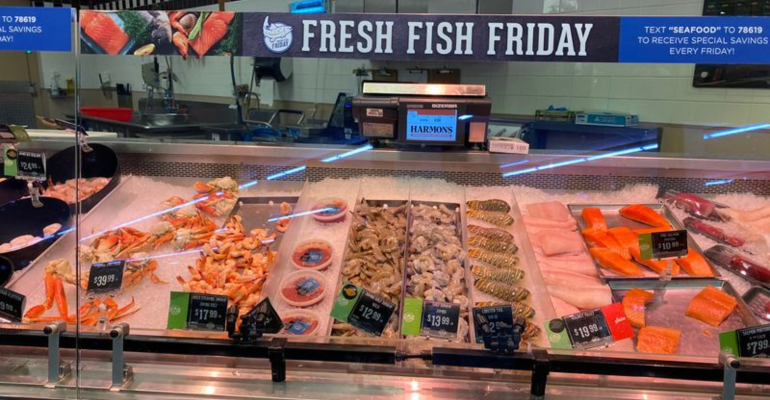Fear of the unknown is proving to be a formidable obstacle to the retail merchandising of more seafood species and shopper interest in alternatives.
Most operators are focusing on sustaining and expanding sales of shrimp, salmon, tuna, and crab, which account for more than 70% of seafood revenues, while paying little heed to the dozens of additional species, analysts said. Shopper reluctance to purchase novel items because the selections may not meet their taste expectations is keeping many potential sellers, who are wary of generating greater shrink from low-selling products, from expanding their arrays.
“In both refrigerated and frozen seafood, there are a mere handful of powerhouse sellers that cement the vast majority of sales,” said Anne-Marie Roerink, president of 210 Analytics LLC, a San Antonio-based marketing and marketing strategies firm and co-author of the Seafood at Retail 2024 report. “This has led some retailers to have a very narrow focus on assortment, which typically results into a few different salmon SKUs, a white fish, and shrimp. However, retailers that are looking to differentiate take a different take: leveraging variety, along with education, to engage with the core seafood consumer.”
By offering more varieties and creating the perception of their stores as being seafood destinations, retailers will be in better positions to interest the most active seafood buyers who purchase across species and integrate seafood in many more meal occasions, she said. “Seeking to attract these highly valuable shoppers is where the unfamiliar species come in,” she said.
Nevertheless, the strong revenue streams from the most popular seafood species are making it less attractive for retailers to widen their focus, Roerink said. Because of the relatively high cost of seafood, with fresh and frozen selections having average price increases of approximately 8.7% and 12.1%, respectively, over the last three years, many consumers are staying inside their comfort zones when purchasing products, Roerink said.
To expand interest, retailers must provide the tools and knowledge for consumers “to feel like ‘they’ve got this,’” Roerink said. Measures can include offering novel species on a weekly or monthly basis while educating shoppers on the products’ flavor, finish, appearance, preparation, and relevant meal plans, she said. Situating various species in cross-merchandising displays in different areas of the store also will highlight selections, Roerink said.
“Seafood is not bought as routinely as meat and poultry, so merchandising visibility is extra important as ‘out of sight, out of mind’ comes into play,” she said. “Bringing the selections out of the seafood department can help drive a purchase that might otherwise have been overlooked.”
Because 30% of buyers account for 75% of total retail seafood volume, operators seeking to maximize sales have the arduous task of generating activity from non-seafood eaters, and particularly for lesser-known species, said Kayla Bennett, manager, media and communications, for the National Fisheries Institute, a Reston, Va.-based non-profit that provides education on seafood safety, sustainability, and nutrition.
“Retailers need to implement strategies to retain the top shoppers while bringing new consumers into the category,” Bennett said. “Younger generations are known to be adventurous eaters but under-index for seafood purchases. Figuring out how to tap into the tastes and protein priorities of Millennials and Gen Z is essential to growing the seafood category in both the short and long term.”
Merchandisers can enhance consumers’ comfort levels by comparing the taste and texture of the unfamiliar options to the most popular items, she said. “Being able to highlight similarities between species can help with the process,” Bennett said.
On a positive note, shopper interest in additional varieties has been gradually increasing over the last several years, she said, adding that the 10 most popular species currently account for more than 75% of all seafood consumption, down from nearly 90%.
In addition, 32% of seafood consumers, including 43% of frequent buyers, said they are purchasing new or different types of seafood, according to the Power of Seafood 2024 report, published by Arlington, Va.-based FMI — The Food Industry Association. Opportunity lies in the 27% of seafood consumers who buy just a few different types of seafood but would like to try more, the report states.
“Unfamiliar tastes may be one small speed bump on the road to trying new seafood products, but concerns about preparation are, in some cases, a real roadblock,” Bennett said. “Retailers can encourage seafood consumption by offering a greater assortment of items, including value-added products that take the guesswork out of preparation. Variety is the spice of life and ready-to-eat and ready-to-cook are great places for retailers to integrate more seafood options.”





